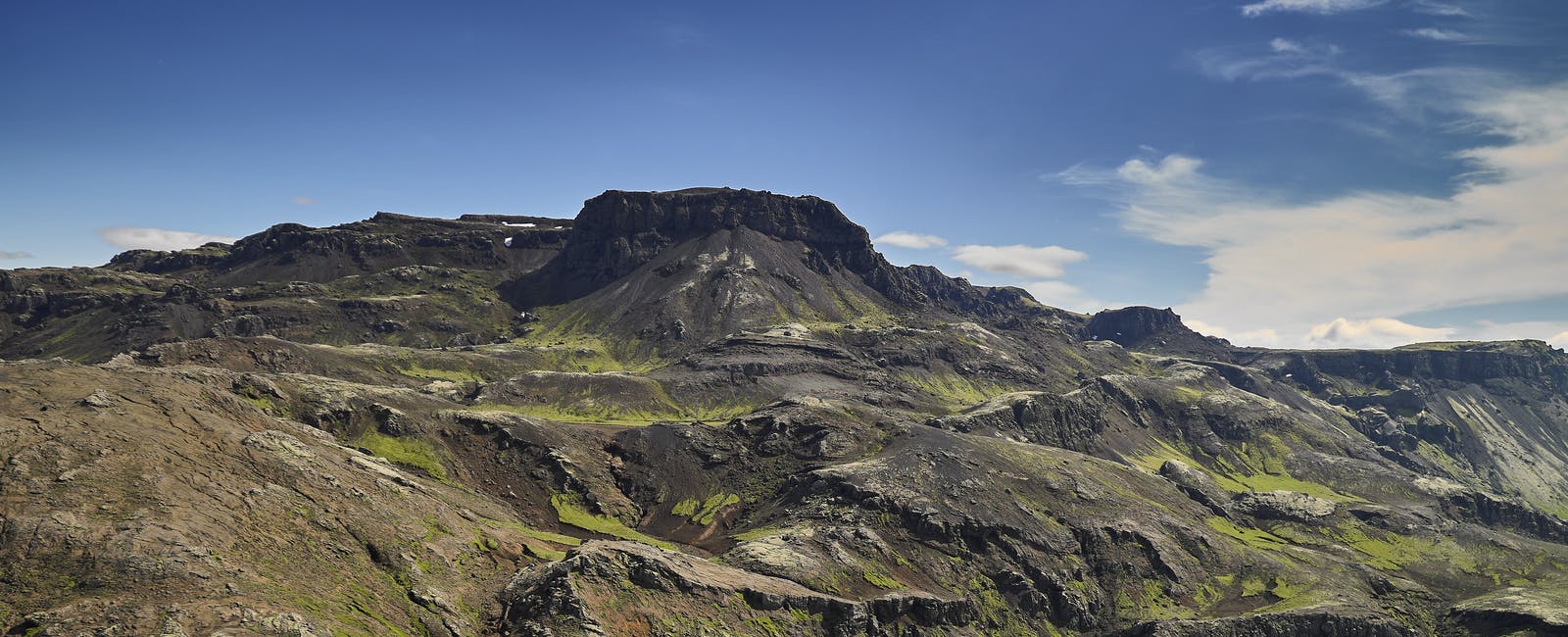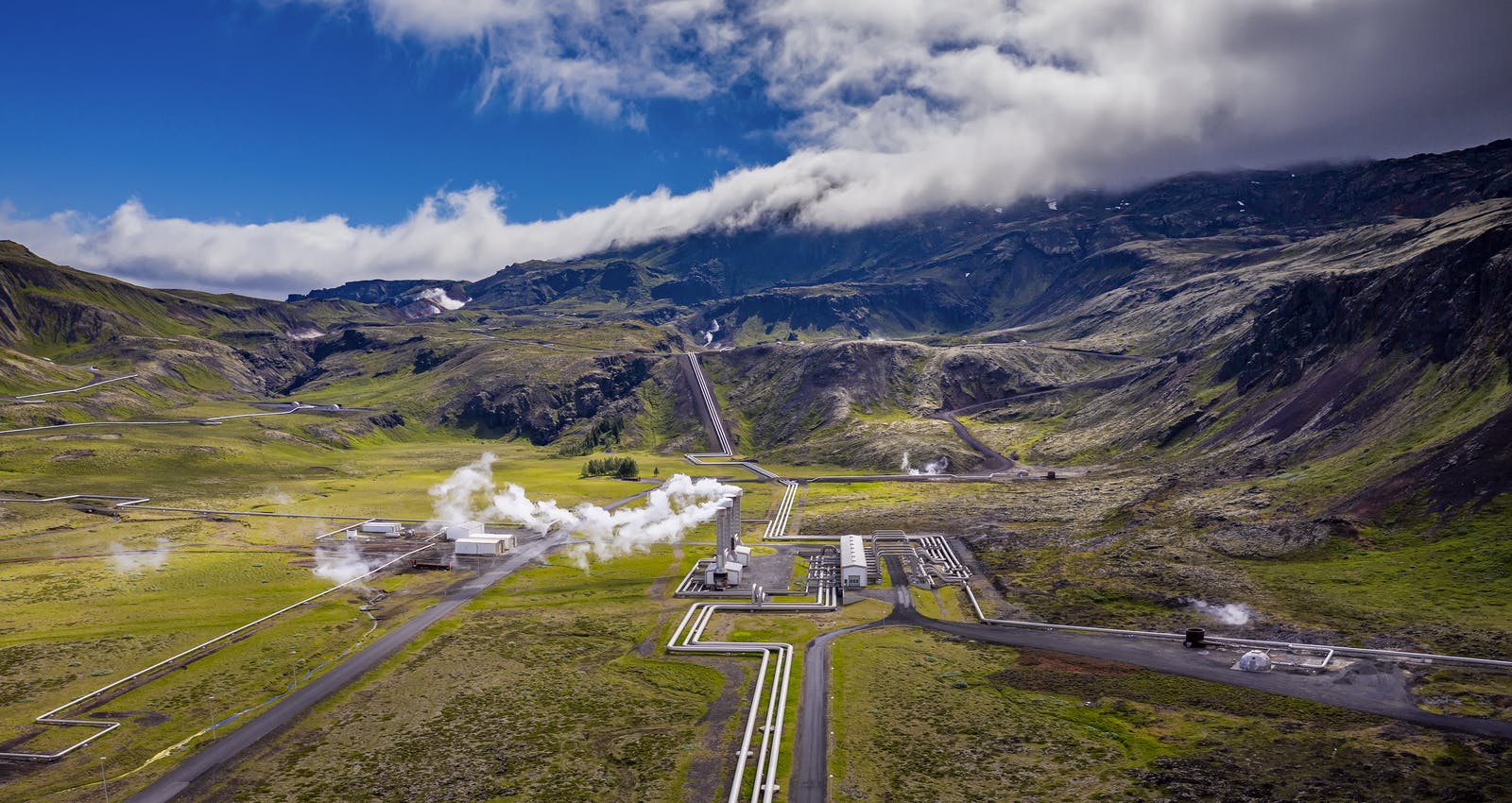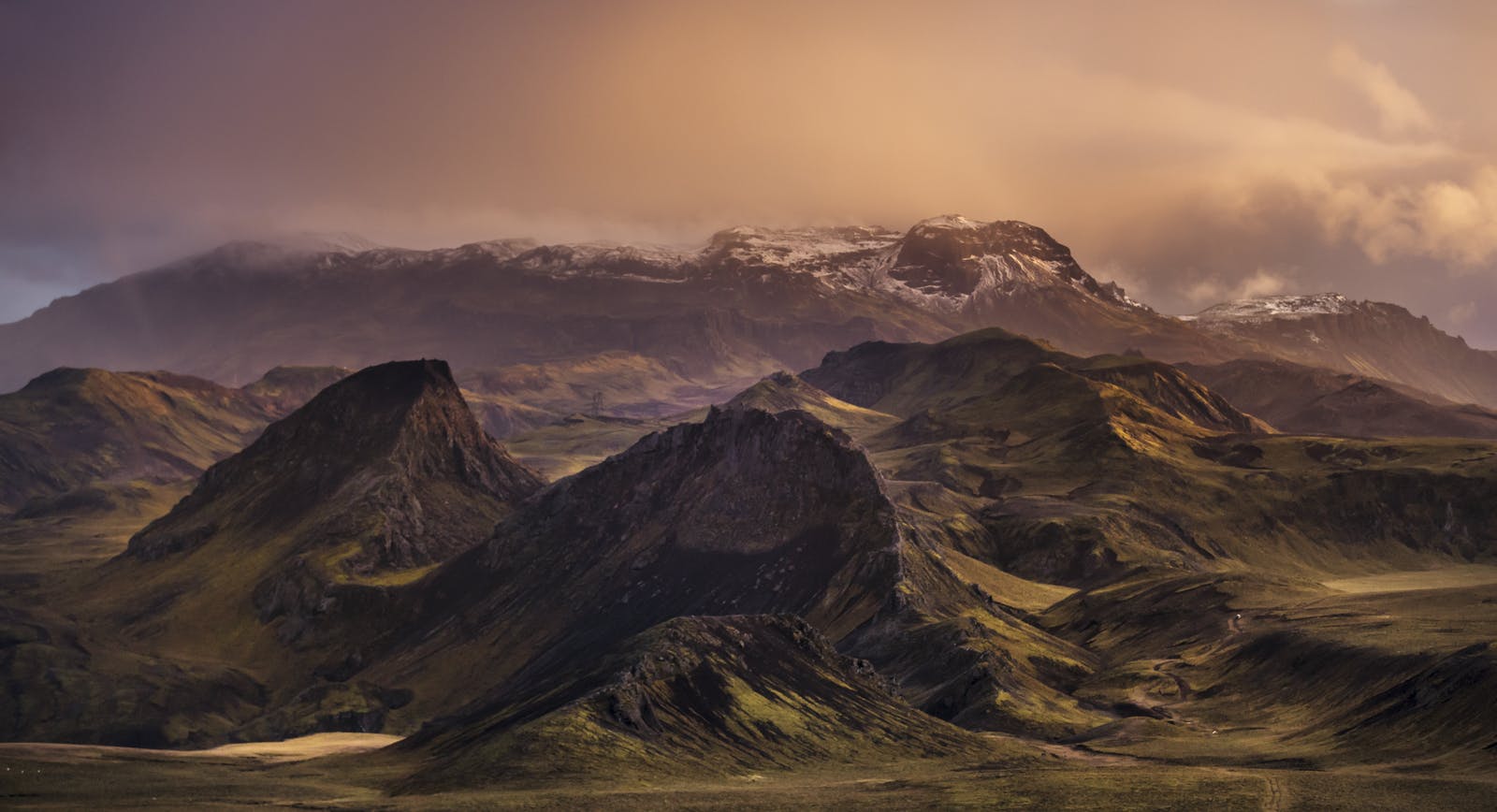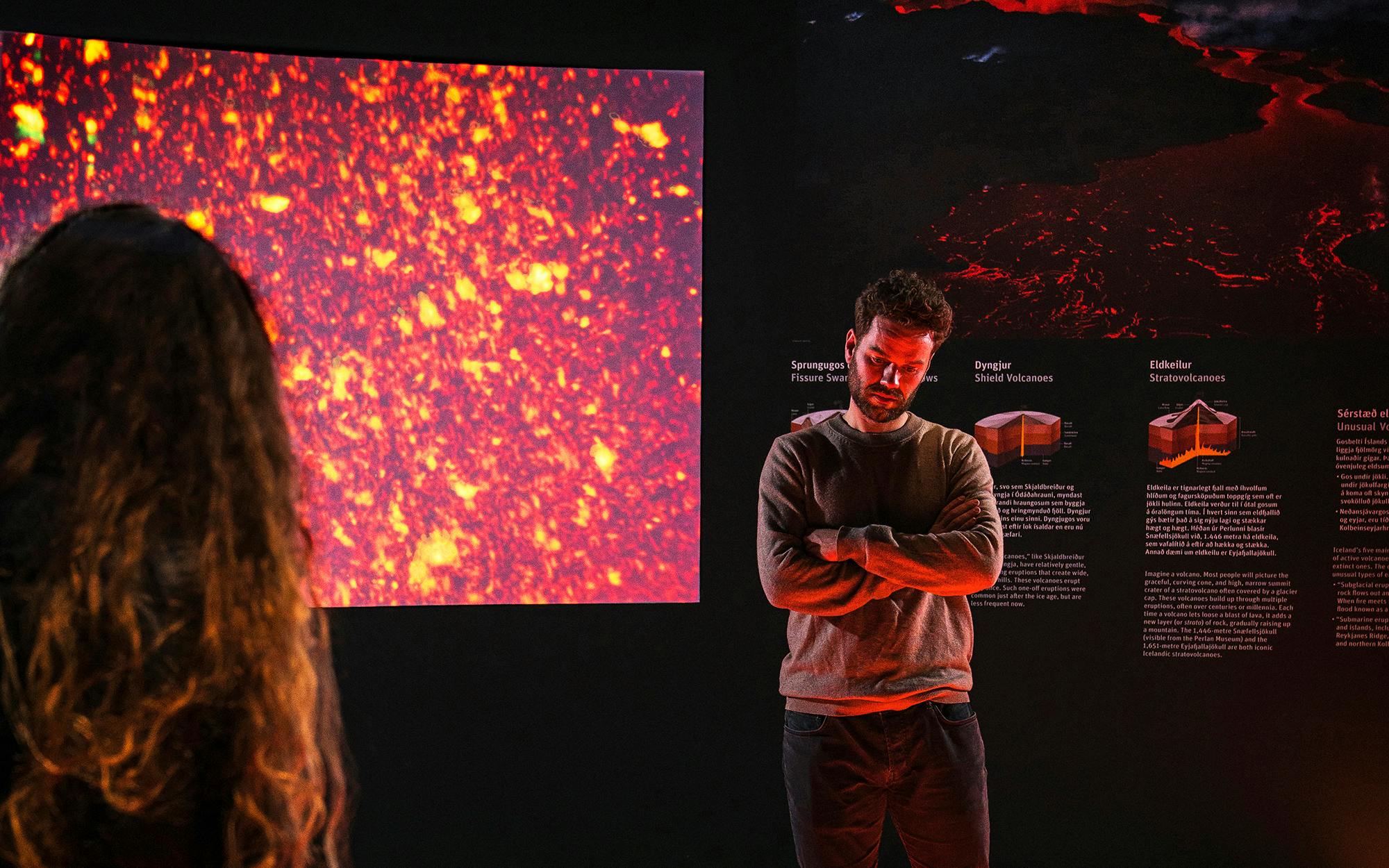
Guide to Hengill Volcano
The Hengill volcanic system is a composite volcano with a central volcano, fissure swarms, and associated geothermal fields. The area is characterised by effusive and explosive volcanic activity, which has left its mark on the region’s unique landscape.
Hengill is surrounded by mountains and hot springs, making it a popular stop for travellers. The town of Hveragerði, with its many hot springs, including the popular Reykjadalur hot stream, is also part of the Hengill area. The mountain range is close to the attractions of the Golden Circle and is at the beginning of the journey to the scenic south coast.
What Type of Volcano is Hengill?
Sitting in the Southwest of Iceland, Hengill is a volcanic table mountain to the south of Þingvellir. Hengill covers an extensive area of about four by seven km².
Is Hengill Volcano Active?

The volcano range is still active, as can be seen by its steaming hot springs and fiery fumaroles. However, the last eruption in the Hengill area occurred approximately 2,000 years ago, long before the settlement of Iceland. There are no indications of an imminent eruption.
Can you Hike Hengill?
Several trails between Hveragerði and Þingvallavatn lead up to Mount Hengill, which is 68 kilometres north of Hveragerði. The 803-metre mountain gives hikers a view of the vast volcanic landscape. Bring your camera and a good pair of boots. There are several active hot spots along the way, so be sure to stick to the trail, as moving off dedicated paths can be dangerous.
What Attractions are Close to Hengill?

Þingvellir National Park
Þingvellir National Park is known as the birth of Iceland as a nation. Translated to “Parliament Plains,” Þingvellir was the site of Iceland’s first general assembly, which was said to have been established in the year 930 and was the meeting place of the Icelandic parliament until 1798.
Many significant sights are at Þingvellir, including Almannagjá (Everyones Gorge) and Lögberg (Law Rock). Þingvellir was established as a national park in 1930. Visitors also come to the area for its geological significance, as it is the site of a rift valley that marks the crest of the Mid-Atlantic Ridge. It’s also home to Þingvallavatn, the largest natural lake on the island, which has a surface area of 84 square kilometres.
Geysir
Iceland’s geysers are the most obvious demonstration of the island’s natural geothermal energy, and historically, Geysir is the country’s most famous example of the phenomenon —it’s actually the source of the word “geyser.”
Gullfoss
The thundering, roaring waterfall of Gullfoss (Golden Falls) epitomises the raw beauty of Iceland. Gullfoss tumbles into the Hvíta (White) River, a perfect name given the turbulent white water. Three water levels at the falls, ranging from 11-21 metres, meet at a 70-metre deep gorge. If you get too close, expect to get wet.
Reykjadalur
Near Hengill, the Reykjadalur hike has become quite popular in the last few years as hikers enjoy the beautiful mountain scenery amid the bubbling hot springs. Guests are rewarded with the chance to bathe in a part of the river that blends ice-cold spring water with hot springs, making for a relaxing soak to soothe their muscles. The hike is best in the summer months, but it’s doable in the winter if conditions are favourable.
Learn about volcanoes in Iceland?

Perlan’s Forces of Nature exhibition allows guests to feel the power of volcanoes, earthquakes, and geothermal energy that powers the island. Guests will learn that volcanoes form when heat and pressure build up beneath the earth’s surface. The earth’s weak points tend to be along fault lines where tectonic plates converge or diverge, as in Iceland’s case.
Perlan’s exhibition shows that volcanic activity in Iceland is so diverse that researchers typically speak of “volcanic systems” rather than individual volcanoes. The island has 30 active volcanic systems, each with many types of volcanoes. Perlan also has exhibitions featuring ice caves, northern lights and geology.
Popular articles

Reykjanes Volcanoes Overview
Enjoy a complete overview of the Reykjanes Volcanoes from 2021-2024. Learn about its geology, recent activity, and visitor tips for a safe, memorable experience.

Reykjanes Peninsula Volcanoes: Sundhnúksgígar Eruptions
The anticipated volcano has erupted in the Reykjanes Peninsula, the site is being called Sundhnúkagígar. See the historic insights on the seismic activity and volcanic eruptions.

Earthquakes in Iceland
Earthquakes in Iceland are a fact of life. Each year, hundreds of small tremors shake the earth, a reminder of the country’s position on a tectonic plate boundary.

Volcano Museums and Exhibitions in Iceland
If you don't manage to visit an actively erupting volcano in Iceland - Experience its force at one of these excellent volcano museums and exhibitions in Iceland.

Top 10 Places To See the Northern Lights in Iceland
You can see the northern lights across the country, but some spots are more suitable than others. Find the best place to see the northern lights in Iceland.

Ice Caves From Reykjavik
Travel beyond the capital for a closer look at an ice cave under one of Iceland’s glaciers. If you can’t spare the time, experience Perlan’s ice cave in Reykjavik.